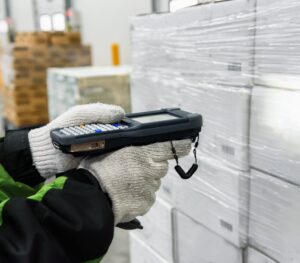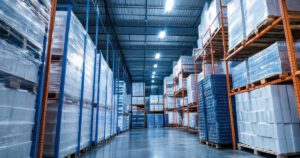In an era of near-constant technological advancement, it is no surprise that the cold chain has transitioned to a cutting-edge industry.
As more and more goods are shipped around the world – from food to medical supplies – maintaining temperatures consistently across supply chains can be uncertain and unpredictable, making navigating sustainability requirements even more challenging.
To fully understand how we arrived at this point in history with our approach toward preserving temperature-sensitive stock, let’s take a look at how Cold Chain technology has evolved over time and where it may be headed in terms of sustainability efforts.
What Is the Current State of Cold Chain Technology?
Cold chain technology is a rapidly evolving field with multiple advancements being made in the field. It plays an essential role in preserving food, distributing pharmaceuticals and medical products, and providing temperature-sensitive products such as cryogenic materials, etc. According to reports, current trends indicate that this market is growing at a brisk rate and is estimated to reach $410 billion by 2028 in the United States alone.

Technology Advancement
The advent of blockchain technology has enabled improved tracking of goods which allows for enhanced security as well as visibility across supply chain stakeholders. Many companies have adapted blockchain solutions integrated into the cold chain process to streamline traceability and accuracy along with ensuring safety standards are met throughout transport processes. Additionally, AI/ML technologies are increasingly being used to optimize logistics networks related to cold storage making it easier for companies to monitor conditions from source to delivery including temperature control, humidity levels, etc., greatly impacting operational efficiency while lowering costs associated with operations.
Cloud Connectivity
This technology is instrumental in driving innovation within this sector as well due to cloud operators providing access to data points like real-time movements of inventory via API integration allowing easy dispatch routes optimization leading to further cost optimization potential within logistics ecosystems associated with cold chains such as trucking fleets etc.
Real-Time Data
 Internet of Things (IoT) devices embedded directly onto transportation equipment can provide real-time updates on location and condition information thus facilitating rapid decision-making processes if shipments need changes or rerouting at any point during transit routes aiding in reduced losses due to fluctuating temperatures or unexpected delays during shipment periods such as border crossings or public holidays when transport assets might not be available immediately adding up costs for firms operating on tight budgets yet requiring shipment deliverables within short timelines amongst other benefits derived from IoT applications directly applicable towards cold chains technologies domains today.
Internet of Things (IoT) devices embedded directly onto transportation equipment can provide real-time updates on location and condition information thus facilitating rapid decision-making processes if shipments need changes or rerouting at any point during transit routes aiding in reduced losses due to fluctuating temperatures or unexpected delays during shipment periods such as border crossings or public holidays when transport assets might not be available immediately adding up costs for firms operating on tight budgets yet requiring shipment deliverables within short timelines amongst other benefits derived from IoT applications directly applicable towards cold chains technologies domains today.
What Does the Future Hold for Cold Chain Technology?
The global cold chain logistics market is undergoing rapid transformation as a result of the increasing demand for its services from various industries, such as:
- E-commerce
- Healthcare
- Retail
- Food & Beverages

The prevalence of e-commerce has increased the need for effective cold-chain transportation and storage of temperature-sensitive products, leading to significant investments in the sector by several stakeholders. This is expected to further bolster the growth of this market in the future.
According to a recent report by Grand View Research (GVR), the global cold chain logistics market size was valued at USD 521.47 billion in 2020 and is expected to reach 801.26 billion by 2030 growing at a compound annual growth rate (CAGR) of 14.07%. The primary driver of this market is the rising demand for refrigerated transport vehicles that can maintain optimal temperatures from harvest or production through final distribution.
Endless Opportunities
Furthermore, technological advancements in Cold Chain Technology (CCT) are paving the way for improved temperature monitoring systems that provide real-time tracking and data collection capabilities throughout transportation routes. These technologies have enabled enterprises to monitor their shipments effectively while complying with industry regulations on product safety and quality assurance measures. Apart from this, new innovations such as blockchain technology are emerging in CCT which can facilitate secure communication between all parties involved in a transaction while also offering end-to-end traceability throughout supply chains. These new technologies offer endless opportunities for process optimization within CCT making it one of the most promising sectors worldwide.
Projected Changes in the Cold Chain Industry

The global cold chain industry is on the cusp of undergoing some major changes as the need for efficient temperature-controlled delivery systems continues to grow. As food, pharmaceuticals, and other products all require proper storage in order to remain viable during their journey, there are increasing demands for suitable solutions within this industry. In the coming years, we can expect several developments related to this market sector that will be highly beneficial for both businesses and consumers alike.
Technology
First off, it’s expected that technological advancements will play a major role in the cold chain industry. From automated temperature monitoring systems that keep track of different components’ conditions at all times to robotics and machine learning technologies that help streamline processes along supply chains – customization options are increasingly available through emerging technologies. This not only allows companies to optimize their operations but also offers customers better control over how their goods are handled throughout transport cycles as well as more accurate shipping information than ever before.

Energy Efficiency
Another significant development in store for cold chain industries is a greater focus on energy efficiency and sustainability initiatives. These provide twofold benefits: firstly by helping businesses lower costs thanks to improved operational efficiencies; secondly through increased customer appeal with respect to green initiatives practiced by retailers/suppliers further down the supply line leading towards better brand loyalty resulting from environmental consciousness amongst end users globally.
Service Quality
Finally, with digitalization taking hold across practically every sector today – including logistics management – an overall improvement in service quality can be expected within this space too. This includes tracking capabilities having been improved such that freight visibility has been greatly enhanced along with offerings of superior levels of customer care due largely thanks to automation-driven real-time updates being provided about deliveries or shipment statuses which then helps ensure a much smoother process throughout the entire journeys taken by goods transported via these channels going forward from here on out into the future!
Summarizing
Cold chain technology has come a long way since its conception and will continue to improve significantly in the future as it becomes incorporated into our everyday lives. These advances have made a positive impact on food safety but also sustainability by reducing spoilage, emissions, and waste.
With this newfound understanding of our finite resources, Nordic Cold Chain Solutions provides an excellent avenue for companies who are looking to support sustainability in their operations.
Whether it is better managing the temperature range of perishable goods or providing energy-efficient refrigerators, these solutions need to be implemented as soon as possible by embracing innovation and utilizing technological advances.
By doing so, we can make strides towards safer cold chain systems that are more environmentally conscious while also reaping economic benefits worldwide.
Contact us today to learn more about now Nordic promotes sustainability for your unique cold chain operations.







